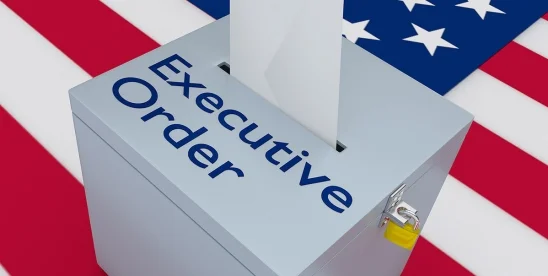Below is a review of the posts on Facebook and LinkedIn from the past week. You can check out the full posts by clicking on the links.
NOTE: there is continued instability and fluctuation with all of the changes in federal labor and employment agencies and the EOs, so check with us or another employment lawyer before taking any action based on something in our posts.

The post on Sunday 3/16/2025 noted that legal precedents offer novel ways for federal employee whistleblowers to fight retaliation. So timely and relevant. You may know that the system of anti-retaliation protections for federal employees who blow the whistle or speak out about their agency’s conduct is infamously weak. Under the Whistleblower Protection Act (WPA) and other laws, federal employees seeking a remedy for an adverse action against them for whistleblowing must rely on the Merit Systems Protection Board (MSPB). But currently the MSPB is still in a substantial delay and is also now threatened by politicization.
But federal employees are not left high and dry. There are several other options for federal employees facing retaliation to obtain relief in federal court and not solely rely on the WPA for relief. The precedents have been established by the U.S. Courts of Appeal for the District of Columbia and Fourth Circuits. So this other door is still there for federal employees who face retaliation for whistleblowing and oppose discrimination, to prevent the violation of their privacy, and to enforce their rights to engage in outside First Amendment protected speech.
Let’s tackle this in reverse, starting with federal employees’ First Amendment rights and the landmark 1995 case Sanjour v. EPA (the holding of which is in the post). This case therefore gives federal employees an argument when an agency tries to stifle whistleblowing made outside of work. To whom the case applies and when is also in the post. Let’s look at what led to the decision.
William Sanjour was the branch chief of the Hazardous Waste Management Division within the EPA. He challenged rules written by the Federal Office of Government Ethics that restricted EPA workers’ rights to speak to environmental community groups. Because the EPA had warned Sanjour that his acceptance of reimbursement for travel to North Carolina to give a speech critical of EPA policies concerning waste incineration was in violation of a regulation and could result in adverse action, Sanjour challenged the “chilling effect” on speech of the government’s rule. The D.C. Circuit upheld the constitutional challenge. How did timing affect this case? See the post.
The key precedent from the Sanjour case is that the Court could issue a nationwide injunction preventing implementation of a regulation because of its chilling effect on the First Amendment right of employees to criticize the federal government. What the Court said is in the post. This applies to federal employees who plan on making public statements (outside speaking or writing on matters of public concern under the circumstances described in the post, NOT workplace activities) and have a reasonable basis to believe that their government employer would take adverse action against them if they made the public disclosures or violated a regulation. The relevant limit on First Amendment protected speech is in the post.
And what about “mixed cases”, those that also involve discrimination or retaliation under Title VII? There is precedent holding that federal employees may have those mixed-WPA retaliation cases heard in federal court. Why this move from the MSPB (for straight WPA claims) to the federal courts (for mixed cases) might be important, and the attendant timing for the claim, is noted in the post. Let’s look at an example.
Dr. Duane Bonds was a top researcher at the National Institutes of Health on sickle cell disease who blew the whistle on the unauthorized cloning of participants’ cells. Dr. Bonds faced retaliation for blowing the whistle, including sex discrimination, harassment in the workplace, and eventual termination. In 2011, the United States Court of Appeals for the Fourth Circuit ruled in Bonds v. Leavitt that Dr. Bonds’ retaliation and discrimination complaint must be considered a “mixed case” and heard together. In its ruling the Fourth Circuit cited an earlier D.C. Circuit ruling in Ikossi v. Department of Navy. What that case said, and the basis therefore, is in the post. The Bonds and Ikossi decisions are controlling precedent in the DC and Fourth Circuits (which include the jurisdictions listed in the post) but are to be given consideration elsewhere.
Whie this precedent in Bonds v. Leavitt and Ikossi v. Department of Navy mean that (at least some) federal employees can take mixed-cases to federal court under the right circumstances, know that the procedure for mixed cases is complex, including the timing (some of which is in the post).
And what about federal employees’ Privacy Act rights? Linda Tripp is most famous for her role in the impeachment of President Clinton. However, her retaliation case established a strong precedent protecting federal employees under the Privacy Act. Tripp successfully challenged the Department of Defense when it released confidential information from her security clearance file in retaliation for her actions. Tripp did not seek relief under the WPA. Rather, she brought a Privacy Act suit in federal court. What and who the Privacy Act covers, and what it prevents and requires the federal government to do relative to certain governmental records, is all in the post. And as relevant here, there is a provision of interest to whistleblowers – see the post. The Privacy Act gives all persons, including federal employees, the right to file suit in federal court to obtain access to their files and seek damages for the actual harm caused by any leaks or violations of the law. A court can also order an agency to correct information in government files that are inaccurate and prevent agencies from maintaining information in violation of law. Those who file successful Privacy Act complaints are entitled to attorney fees and costs related to their lawsuit. In the Tripp case, when the federal government leaked information covered under the Privacy Act to discredit her, Tripp successfully pursued a Privacy Act suit for damages and fees.
TAKEAWAY: Federal employee whistleblowers can be helpful in rooting out fraud, abuse, and misconduct in the government, but they need protection from retaliation that often results from their activities. (ASIDE: this article is not referring to DOGE employees/actions.)

The post on Monday 3/17/2025 talked about Trump’s Executive Orders considered: implications for private employers. Governmental agencies, big law firms, and higher ed institutions are not the only ones in the crosshairs. As you know from our many prior posts (including Sunday 2/23/2025, Thursday 3/6/2025, and Tuesday 3/11/2025), President Trump issued a multitude of Executive Orders (EOs) in his first week in office. He also signed multiple immigration-related orders (the focuses of which are listed in the post). So let’s talk about the anticipated impact of the immigration-related orders on private employers and, in particular, a renewed and more aggressive focus on Form I-9 audits by the US Immigration and Customs Enforcement (ICE) division of the US Dept. of Homeland Security (DHS).
THe first such EO, titled “Protecting the American People Against Invasion”, directs the “Efficient and expedited removal” of individuals not legaly authorized to reside or work in the US and prioritizes both civil and criminall enforcement. What the Agency is authroized to do is noted in the post.
The second immigration-related EO is titled “Securing Our Borders” and contains broad directives for removal and prosecution of individuals “who violate the immigration laws” (and the prosecution of “those who facilitate their unlawful presence” in the US), and more as listed in the post. Given the explicit directives in the EOs and the Administration’s enforcement-focused rhetoric, employers should expect and prepare for an uptick in both Form I-9 audits and unannounced worksite enforcement actions by ICE. Let’s take those in order.
Form I-9 places compliance obligations on both the employee and employer. The employee must attest, under penalty of perjury, to their identity and provide prescribed documents evidencing their authorization to work in the US. What the employer must do is detailed in the post. There is also a verification for the employer to sign under penalty of perjury – what that covers is also listed in the post. Form I-9 must be completed (including with respect to the examination of the identity and work authorization documents) within three business days of an employee’s date of hire.
ICE inspections of an employer’s Forms I-9 may be lead driven (what that means is in the post) or randomly initiated. ICE launches a Form I-9 audit by serving the employer with a Notice of Inspection (NOI). What the NOI requires the employer to do, and the timeframe, is also in the post. ICE can request a variety of documents, such as those listed in the post. If your business is served with an NOI, your first step should be to contact your immigration and employment lawyers. Carefully review the NOI to determine the scope of the audit and respond only with the documents actually requested in the NOI – this is NOT a situation where providing more will be helpful to you. Keep a copy of the entire response packet that you provide to ICE.
After it receives your response packet, ICE will review the information and tell you of the outcome of its audit via Notice of Inspection Results (compliance letter), Notice of Suspect Documents, Notice of Discrepancies, Notice of Technical or Procedural Failures, Warning Notice, or Notice of Intent to Fine. What each of those means, and any actions that are either required or permitted as a result of the notice, are detailed in the post.
So given this (anticipated) stepped-up I-9 enforcement, what should employers do? Self-audit. To ensure ongoing compliance with applicable law, and the other things discussed in the post. Keep an eye out for common issues (such as those noted in the post). Look at records for both active employees and terminated employees within the mandatory Form I-9 retention period. Be careful how the self-audit is conducted (by way of example, see the post). And make sure to also review the employer’s Form I-9 collection, timing, and retention processes.
TAKEAWAY: You may have been doing the same thing the same way for years relative to employee verification records but now is definitely the time to double-check that what you are doing is legally compliant and to make sure you can show that if and when required to do so.

The post on Tuesday 3/18/2025 reminded us that whether in condo or HOA, emotional support animals (ESAs) differ from service animals and pets under the law. Let’s look at a factual scenario. Someone lives in a large apartment building in a western suburb of Chicago. She is allowed to have her emotional support animal there as long as she has documentation from her doctor. But now she is shopping around for a condominium. There is a unit that she really likes; however, the owner told her that no pets are allowed. Even after being told that it is an ESA, the potential seller said the condo association will not allow it. The question is if that is legally correct
The answer here is probably not “it depends”, but rather “no”. There are pets and there are service animals. And then there are ESAs. The Americans with Disabilities Act (ADA) provides some guidance relative to service animals. The definition of a service animal is in the post along with an example. The guidance also distinguishes an ESA from a service animal (again, see the post). Unlike service animals, there is no limitation on the type of animal that can be an ESA – that has led to some pushback against people who have ESAs of a more exotic nature (see the post for an example).
As relevant here, condominium and homeowners’ associations set the rules governing how the property is managed. Those rules can include regulating pets (including in the ways listed in the post). And the rules will often change after one owner tries to stretch them – see the post for an example. If pets are allowed, then there is usually no need to discuss allowance of an ESA. But if pets are not allowed or are subject to restrictions, then ESA owners can be impacted (service animals are allowed by law and, as noted, are not pets – as long as their owners comply with rules regarding noise, pet waste pick-up and similar, that is the end of the discussion).
So ESA owners must look to other federal law (possibly the Fair Housing Act) and state law if the animal would otherwise be prohibited under the associations Governing Documents. But there is a process that should be followed relative to ESAs. (One example, that may not be the best, is in the post).
TAKEAWAY: Those looking to move into a community association (condo or HOA) should deal with their ESA before buying so that it is not an issue after the fact. Consult a community association lawyer.

The post on Wednesday 3/19/2025 told us Court upholds verdict in BCBST religious discrimination case – look at the $$$ at issue! This case comes out of Tennessee, but is not unusual Here the court upheld a jury verdict in favor of former BlueCross BlueShield of Tennessee (BCBST) employee Tanja Benton in a religious discrimination lawsuit over the company’s COVID-19 vaccine mandate (and in answer to the unasked question, yes, it often takes this long for cases to wind through the system).
The final ruing was issued Jan. 31, ordering BCBST to pay Benton $502,380.65 in damages. It started with a jury verdict in June 2024 awarding Benton $687,240.00. The basis for the jury award is in the post (and should serve as a warning to employers). The original jury award included $177,240.00 in back pay, $10,000 in compensatory damages, and $500,000 in punitive damages. BCBST filed a Renewed Motion for Judgment as a Matter of Law, seeking to overturn the jury’s decision and reduce the damages award. The judge denied the motion but adjusted the punitive damages award (for the reasons noted in the post). What the court’s final award includes is also listed in the post.
There is also a separate but related case wherein a group of former BCBST employees filed a class action lawsuit alleging religious discrimination related to the company’s COVID-19 vaccine mandate. The suit was filed after an investigation by the US Equal Employment Opportunity Commission (EEOC) which began in November 2021. The suit challenges the termination of employees who declined the COVID-19 vaccine for religious reasons. As background, in October and November 2021, BCBST terminated 41 employees after implementing a COVID-19 vaccine mandate for 900 customer-facing roles. Many of the affected employees had been working remotely during the pandemic and requested religious exemptions. The plaintiffs in the suit allege that BCBST denied their requests and instead issued them an ultimatum. (NOTE: the timing of the termination was important in the case as noted in the post.) The lawsuit alleges that rather than offering alternatives (such as those listed in the post), BCBST issued its ultimatum (yep, in the post).
Interestingly, the Benton ruling came shortly after an Executive Order signed by President Trump reinstating military service members who were discharged for refusing the COVID-19 vaccine.
TAKEAWAY: Employers must know their (religious and other) accommodation obligations – involve an employment lawyer to help you stay out of legal hot water.

In the post on Thursday 3/20/2025, we looked at how Trump’s decision to fire NLRB and EEOC commissioners could change the future of the workplace. NOTE: the link in the post may have been broken, so here is a different one: https://ow.ly/Fb4f50VmKYQ.
What we know is that President Trump fired Gwynne Wilcox, a member of the National Labor Relations Board (“NLRB” or “Board”) despite the statutory protections shielding Board members from removal without cause. You may not think it relevant to you, but the action had an immediate impact on employers, unions, and workers because it left the Board without a quorum to issue decisions in labor cases. As of 3/17/2025, Wilcox had been judicially reinstated to the NLRB, but that may change again as the case winds its way through the legal system in a test of the President’s authority to remove Board members. The outcome will most likely impact the future of the NLRB and the landscape of U.S. labor law. Let’s first examine the background and potential impact of Wilcox’s removal.
In September 2023, the Senate confirmed Wilcox to a second five-year term through the end of August 2028. Former Chairman and Democrat appointee Lauren McFerran’s (“McFerran”) term expired on December 16, 2024, after the Senate voted not to advance her nomination, signaling the Republican-led Senate’s intention to change the Board’s composition. At the time of McFerran’s non-renewal, there was already a vacancy on the Board, leaving two possible spots for President Trump to fill upon taking office. President Trump’s removal of Wilcox on January 27, 2025, now leaves three of the five Board seats vacant and eliminates what would have otherwise been a Democratic majority on the Board. The only members (for now) are Republican appointee Marvin Kaplan, who the President named the Chair of the NLRB on Inauguration Day, and Democrat appointee David Prouty, whose term is set to end in August 2025.
Once Wilcox was removed, the NLRB’s quorum (a majority of 5 members) was lost. The immediate consequence of that is in the post. (As noted, since Wilcox was judicially reinstated as of 3/17, a quorum exists and the NLRB again has a quorum.)
For employers, the lack of a quorum on the NLRB could be a double-edged sword. On the one hand, the freeze in NLRB decisions may delay rulings that could have been unfavorable to employers in pending cases. On the other hand, during the Biden administration, the Board issued decisions that were favorable for unions and expanded protections for employee rights under the National Labor Relations Act. So what is the effect on those decisions without a Board quorum? See the post.
President Trump’s legal justification for removing Wilcox hinges on the 2020 Supreme Court decision in Seila Law LLC v. CFPB. What that case held is detailed in the post. Trump specifically cited Seila Law when he fired Wilcox, claiming the NLRB is not covered by the decision (for the reasons noted in the post). That interpretation has been and will continue to be challenged in federal court. A final decision on the ultimate issue here (the extent of presidential powers to remove NLRB members) will almost definitely impact companies and the numerous lawsuits filed over the past year pursuing constitutional challenges against the NLRB (including those noted in the post). Stay tuned …
But President Trump’s recent actions are not limited to the NLRB. On January 28, 2025, he also fired Jocelyn Samuels and Charlotte Burrows, two Democratic commissioners of the Equal Employment Opportunity Commission (“EEOC”), along with the EEOC’s general counsel, Karla Gilbride. That eliminated the Democratic majority on the EEOC and looked toward advancing his civil rights law agenda.
Some of this was discussed in our prior posts on Sunday 2/23/2025, Monday 2/24/2025, Friday 2/28/2025, Wednesday 3/5/2025, Saturday 3/8/2025, and Tuesday 3/11/2025, also found in blogs at www.austinlawllc.com.
Removal of an NLRB member and two EEOC commissioners is part of the current administration’s broad strategy of reshaping what are to be independent agencies into alignment with the administration’s policy goals. The President’s assertion of power to remove the NLRB members and EEOC commissioners is a pivotal moment in labor relations and regulatory oversight of employers. the Legal battles and policy shifts that have and will ensue are creating uncertainty now and will most likely effectuate broad changes in the future.
TAKEAWAY: employers must be flexible but follow the law (and guidance) that is currently in place. The ability to pivot quickly may become necessary. Keep your employment lawyer on speed dial.

The post on Friday 3/21/2025 was about consideration of Toy Box condo plans (and a reminder that condominiums can be commercial too). The Board of the subject municipality was set to meet to discuss and possibly approve the condominium plat and declaration for the Toy Box vehicle storage facility. In case you’ve forgotten what Toy Box condos do, see our post of Wednesday 6/19/2024.
The Town Engineer recommended approval of the plat and declaration (the content of which is listed in the post). The size of proposed 47 units is also in the post.
TAKEAWAY: Keep in mind that while the majority of condominium and homeowner associations consist solely of residential units, there are portions (or entire associations) that have commercial units (see for one example our post on Thurs. 2/27/2025). All should be able to co-exist.

Finally, in the post yesterday 3/22/2025, we saw that DOJ to investigate antisemitism claims against the University of California. In the first week of March, the U.S. Department of Justice (DOJ) announced the launch of its investigation into allegations of antisemitism under Title VII. The investigation is in partnership with the EEOC; its focus is as noted in the post. This follows an investigation launched in February by the U.S. Department of Education into five universities with the purpose of combating antisemitism on K-12 and college campuses. Both investigations tie in to Trump’s Executive Order 14188: Additional Measures to Combat Anti-Semitism. A statement from the office of the University’s President is in the post. The investigations focus on alleged discrimination and harassment toward Jewish students, professors and staff. They specifically allege antisemitic incidents at the Free Palestine encampments across UC campuses last spring, including the UC Berkeley encampment. Where this started is also in the post (via statements from several sources including DOJ and DOE). The director of the Berkeley Center on Comparative Equality and Anti-Discrimination Law did not dispute that it is appropriate to look for patterns and practices when complaints are made. But what he said about this investigation calls into question the underpinnings of the instant investigation – see the post.
TAKEAWAY: Antisemitism should not be tolerated in any setting. But it must be investigated for the right reason and with due process. But now we must keep in mind (and perhaps look through the lens of) the recently-reported resolution between the Trump Administration and Columbia University…

 York, Pennsylvania 17403
York, Pennsylvania 17403